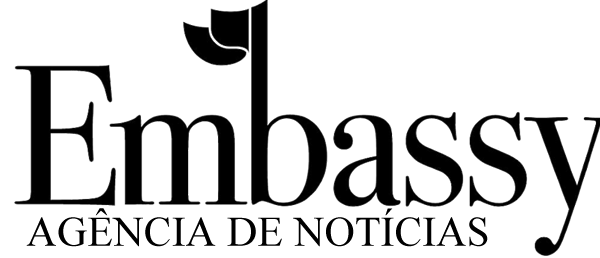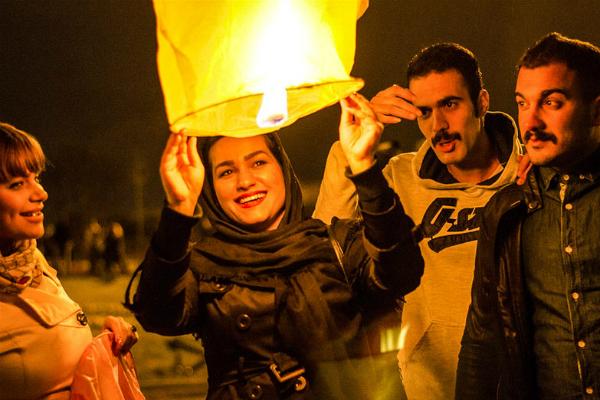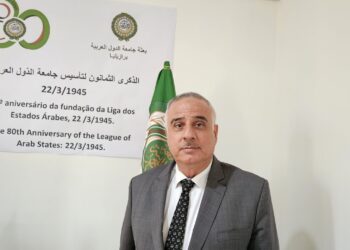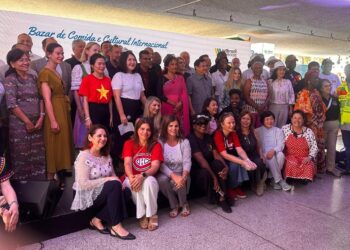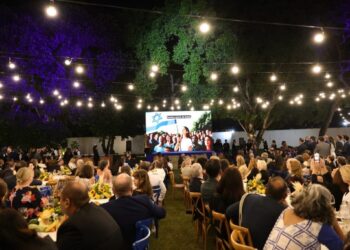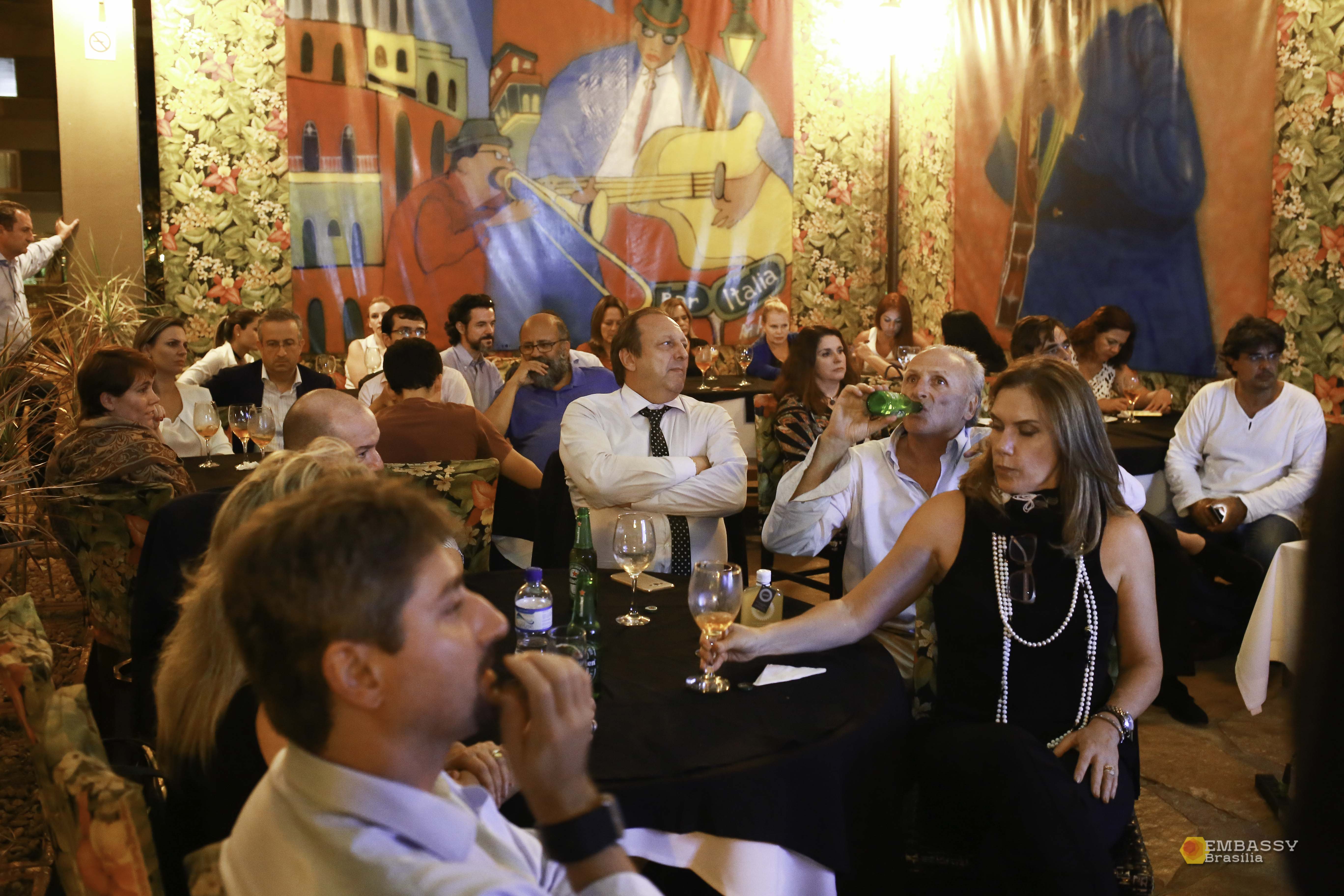Nowruz or “New Day” is the name of the Iranian New Year which, this year, was celebrated on 21 March around the world along with a few other ethnolinguistic groups. The date marks the beginning of spring in the Northern Hemisphere, considered by many nations as a symbol of rebirth when the flowers shine and nature gains new vitality. The families get together to participate in many rituals with bonfires, games, parties with dances and traditional songs, with a large table. Nowruz is also celebrated in the Republic of Azerbaijan, India, Kyrgyzstan, Pakistan, Turkey, Afghanistan, Tajikistan and Uzbekistan. The date has been celebrated for more than 3,000 years in Western Asia, Central Asia, the Caucasus, the Black Sea Basin and the Balkans. It marks the first day of the first month (Farvardin) in the Iranian calendar.
The United Nations General Assembly has recognized Nowruz International Day in 2010 as a spring festival of Iranian origin, which has been celebrated for more than 3,000 years. At the meeting of the Intergovernmental Committee for the Safeguarding of the Intangible Cultural Heritage of the United Nations, held from 28 September to 2 October 2009, Nowruz was officially inscribed on UNESCO’s List of Intangible Cultural Heritage.
Nowruz includes many steps and weeks of preparation.
Cleaning and house purchases
House cleaning or “shaking the house” is usually observed before the arrival of Nowruz. People begin to prepare for Nowruz with an important spring cleaning of their home and the purchase of new clothes to wear for the New Year as well as the purchase of flowers. In particular, the hyacinth and tulip are popular and remarkable.

Charshanbe Suri is a prelude to the New Year. In Iran, it is celebrated on the eve of the last Wednesday before Nowruz. It is usually celebrated at night by people who make bonfires and jump on them, as well as the release of fireworks and sparklers.
Countdown
After Charshanbe Suri, the Iranians wait with their families and friends for the exact moment in which the vernal equinox occurs, Tahvil in Farsi. Old people distribute sweets and children receive coins. People start making short visits to the homes of friends and family throughout the day and night. At each visit, the hosts provide chestnuts, sweetmeats, dried fruits and tea to their guests.

Festival Charshanbe1Haft Seen (Seven S) is the traditional Nowruz table setting in Iran. Usually, in the countdown to the arrival of Nowruz, family members gather around a table, with Haft Seen served in it, and wait the exact moment of the March equinox to commemorate the New Year. At that moment, the New Year gifts are changed.
The setting includes seven items starting with the letter S or seen in the Persian alphabet. Items include:
Vegetable (sabze): Wheat, barley or lentil sprouts grown on a dish. It is a symbol of green, nature and joy. There are some who claim that it is a symbol of love as well.
Samanu: A sweet pudding made from sprouted wheat.
The dried fruits of the tree zambujeiro (senjed): symbolize wisdom and regeneration. In traditional medicines Senjed was used to invigorate the brain and memory, and so is considered as a symbol of wisdom in Haft-Seen.
Garlic (sir): it is a symbol of contentment and respect for the rights of others.
Apples (sib): Its main symbolic definition is “Health”; There is a saying in Persian culture that says, “If one eats an apple a day, he will never need a doctor!”
Somāq: it is a symbol of patience and tolerance.
Vinegar (serke): symbolizes disinfection. Also some believe that it is a symbol of surrender and satisfaction.
These items are also known to have astrological correlation with the planets Mercury, Venus, Mars, Jupiter, Saturn, Sun and Moon.
Other symbolic items that are usually set throughout the Haft Seen are candles, a mirror, decorating coins and decorated eggs (sometimes one for each family member). A bowl of water with goldfish, a Holy Quran and / or a book of poetry (eg Hafez’s Daybed) and rose water are also included in the scenario.
Nowruz meals are filled with treats such as sweets, cakes, nuts and refreshments (sherbet).
Some of the main dishes are:
– Sabzi Polo ba Mahi: rice dyed green with herbs, served with fried fish;
– Kuku Sabzi: soufflé of vegetables and herbs;
– Reshteh Polo: lamb chopped with rice and noodles;
– Dolmeh Barg: grape leaves stuffed with a mixture of rice and ground lamb;
– Shekar Polo: sweet rice pilaf.
Sizdah-bedar is an Iranian festival tradition
Sizdah Bedar
Siizdah-bedar is an Iranian festival tradition.
On the 13th of the new year, the Iranians try to get rid of the bad luck associated with number 13, spending the day outside having fun with family and friends. Many people take lunch to picnic in parks or in the countryside. The tradition is known as sizdah bedar, or “get rid of day 13”.
The Iranians also discarded the Sabzeh grass from Haft Seen table, which brought together all the potential bad fortune of a family during Nowruz. Some single girls make knots of grass symbolizing the union of a man and a woman in the hope of finding a husband before the next Nowruz.
Iranianos comemoram o Nowruz
Nowruz ou “Novo Dia” é o nome do Ano Novo iraniano que, esse ano, foi celebrado no dia 21 de março em todo o mundo, juntamente com alguns outros grupos etnolinguísticos. A data marca o início da primavera no Hemisfério Norte, considerada por muitas nações como um símbolo do renascimento quando as flores resplandecem e natureza ganha nova vitalidade. As famílias se reúnem para participar de diversos rituais com fogueiras, jogos, festas com danças e músicas tradicionais, com mesa farta. O Nowruz também é comemorado na República do Azerbaijão, Índia, Quirguistão, Paquistão, Turquia, Afeganistão, Tadjiquistão e Uzbequistão. A data tem sido festejada por mais de 3.000 anos na Ásia Ocidental, na Ásia Central, no Cáucaso, na Bacia do Mar Negro e nos Balcãs. Ele marca o primeiro dia do primeiro mês (Farvardin) no calendário iraniano.
A Assembléia Geral das Nações Unidas reconheceu o Dia Internacional de Nowruz em 2010, descrevendo-o como um festival de primavera de origem iraniana, que tem sido comemorado por mais de 3.000 anos. Durante a reunião do Comité Intergovernamental para a Salvaguarda do Patrimônio Imaterial das Nações Unidas, realizada de 28 de Setembro a 2 de Outubro de 2009, o Nowruz foi oficialmente inscrito na Lista do Patrimônio Cultural Imaterial da Humanidade da UNESCO.
Nowruz inclui muitas etapas e semanas de preparação.
Limpeza e compras da casa
Limpeza da casa, ou “agitando a casa” é comumente observada antes da chegada de Nowruz. As pessoas começam a se preparar para o Nowruz com uma importante limpeza de primavera de sua casa e a compra de roupas novas para vestir para o Ano Novo, bem como a compra de flores. Em particular, o jacinto e a tulipa são populares e notáveis.
Festival de Charshanbe Suri
Charshanbe Suri é um prelúdio para o Ano Novo. No Irã, é celebrado na véspera da última quarta-feira antes do Nowruz. É geralmente comemorado à noite por pessoas que fazem fogueiras e pulam sobre elas, bem como a soltura de fogos de artifício e sparklers.
Contagem regressiva
Após Charshanbe Suri, os iranianos esperam com suas famílias e amigos para o momento exato em que ocorre o equinócio vernal, Tahvil em Farsi. As pessoas idosas distribuem doces e as crianças recebem moedas. As pessoas começam a fazer visitas curtas às casas de amigos e familiares ao longo do dia e da noite. Em cada visita, os anfitriões fornecem castanhas, doces, frutas secas e chá a seus convidados.
Haft Seen
Haft Seen (Seven S) é o tradicional cenário de mesa de Nowruz no Irã. Normalmente, na contagem regressiva para a chegada de Nowruz, os membros da família se reúnem em torno de uma mesa, com o Haft Seen servido nela, e aguardam o momento exato do equinócio de março para comemorar o Ano Novo. Naquele momento, os presentes de Ano Novo são trocados.
A configuração inclui sete itens começando com a letra S ou visto no alfabeto persa. Os itens incluem:
- Verdura (sabze): Trigo, cevada ou brotos de lentilha cultivados em um prato. É um símbolo do verde, da natureza e da alegria. Há alguns que afirmam que é um símbolo de amor também.
- Samanu: Um pudim doce feito de trigo germinado.
- Os frutos secos da árvore zambujeiro (senjed): simbolizam a sabedoria e a regeneração. Em medicamentos tradicionais Senjed foi utilizado para revigorar o cérebro e a memória, e por isso é considerado como símbolo de sabedoria em Haft-Seen.
- Alho (sir): é símbolo de contentamento e respeito aos direitos dos outros.
- Maçãs (sib): Sua principal definição simbólica é “Saúde”; há ditado na cultura persa que diz: “Se alguém come uma maçã por dia, nunca precisará de um médico!”
- Somāq: é um símbolo de paciência e tolerância.
- Vinagre (serke): simboliza a desinfecção. Também alguns acreditam que é um símbolo de rendição e satisfação.
Estes itens também são conhecidos por terem correlação astrológica com os planetas Mercúrio, Vênus, Marte, Júpiter, Saturno, Sol e Lua.
Outros itens simbólicos que geralmente são definidos ao longo do Haf Seen são velas, um espelho, moedas de decoração e ovos decorados (às vezes um para cada membro da família). Uma tigela de água com peixe dourado, um Alcorão Sagrado e/ou um livro de poesia (por exemplo, o Divã de Hafez) e água de rosas também estão incluídos no cenário.
As refeições de Nowruz são repletas de guloseimas como doces, bolos, castanhas e refrescos (sherbet).
Alguns dos pratos principais são:
– Sabzi Polo ba Mahi: arroz tingido de verde com ervas, servido com peixe frito;
– Kuku Sabzi: suflê de verduras e ervas;
– Reshteh Polo: carne de cordeiro picada com arroz e macarrão;
– Dolmeh Barg: folhas de uva recheadas com uma mistura de arroz e cordeiro moído
– Shekar Polo: pilaf de arroz doce.
Sizdah Bedar
No dia 13 do ano novo, os iranianos tentam se livrar da má sorte associada ao número 13, passando o dia fora se divertindo com a família e amigos. Muitas pessoas levam o almoço para fazer piquenique nos para parques ou no campo. A tradição é conhecida como sizdah bedar, ou “se livrar do dia 13”.
Os iranianos também descartam a grama sabzeh da mesa de Haft Seen, que reuniu toda a má fortuna potencial de uma família durante o Nowruz. Algumas meninas solteiras fazem nós com folhas de grama simbolizando a união de um homem e uma mulher na esperança de encontrar um marido antes do próximo Nowruz.

